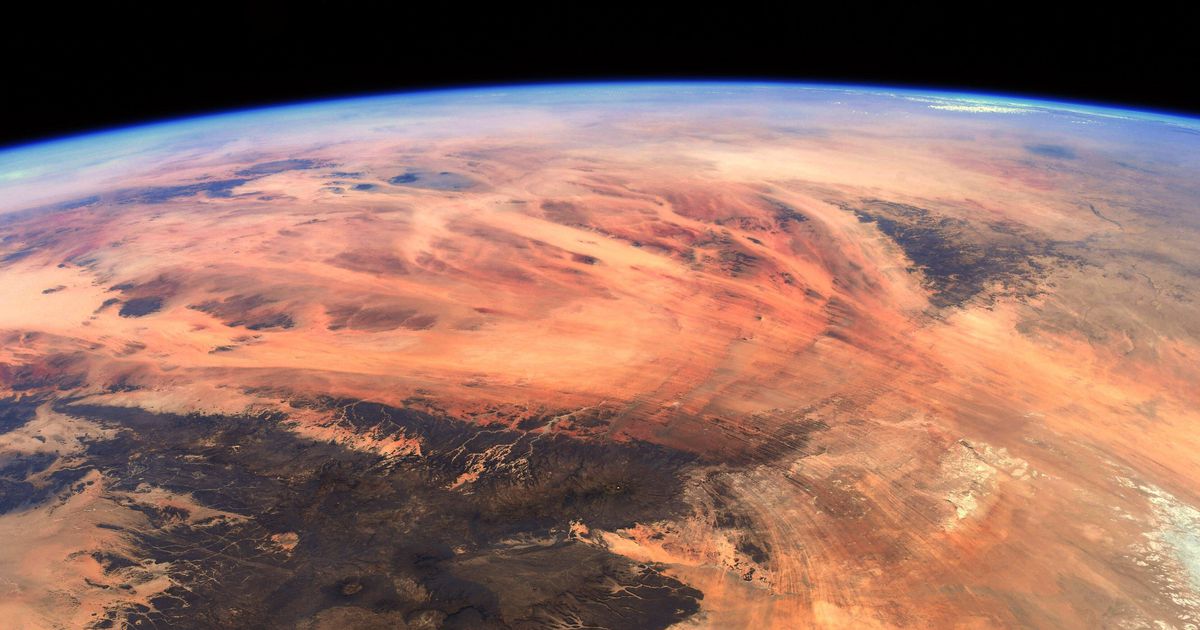
Earth looks like Mars in surprising astronaut photo from the ISS
This might look like Mars, but it's actually a shot of Earth snapped by ESA astronaut Thomas Pesquet.ESA/NASAT. PesquetEarth and Mars look pretty different from each other. We see Mars as a dry dusty, reddish place while Earth looks blue and green with swirly white clouds. Can planets cosplay as each other? Earth tried.European Space Agency astronaut Thomas Pesquet had to question where he was in the solar system when he looked out the window of the International Space Station this month and snapped a photo of Earth looking a lot like Mars. "No cloud in sight and the red and ochre colors stretching to the horizon," Pesquet wrote. "This is how I imagine the Perseverance rover would have seen Mars on its approach to landing." ESA highlighted the image last week after Pesquet shared the photo on social media, saying, "I had to do a double-take when I saw this view: not Mars but our own amazing planet!"The wide desert expanses of Earth can act as Mars doppelgangers when seen from the proper angle. Despite initial appearances, there are some clues this isn't Mars. There are hints of clouds on the right side of the image and the curving blue area across the top is a telltale sign of our planet's more substantial atmosphere. Pesquet is part of the SpaceX Crew-2 mission that arrived at the ISS in April. He's had his eye on the desert parts of Earth recently and captured a nice view of the "Eye of the Sahara," a dome-shaped geologic structure in Mauritania in Africa.The ESA astronaut used the occasion of his Earth/Mars photo to give a shout-out to the various science teams currently operating missions at the red planet: "Mars robotic exploration and human exploration go hand in hand: exploring farther and extending human presence."Follow CNET's 2021 Space Calendar to stay up to date with all the latest space news this year. You can even add it to your own Google Calendar.
……Technology Space Science
Comments
Leave a comment in Nestia App